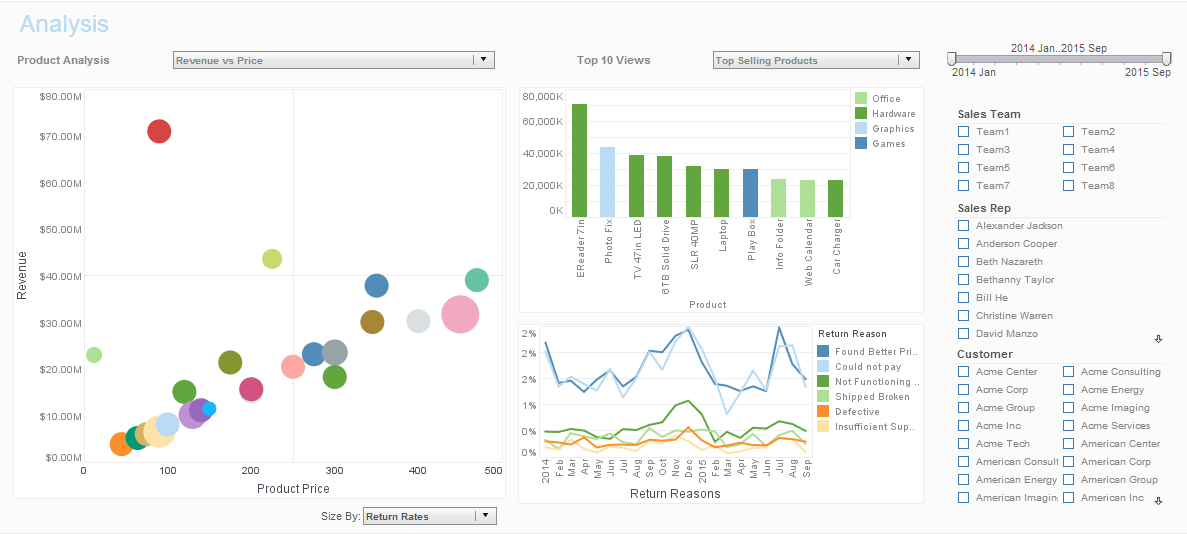InetSoft Webinar: Self-service BI Strategy
This is the continuation of the transcript of a Webinar hosted by InetSoft on the topic of "Data Discovery Tools and End User Mashup." The speaker is Abhishek Gupta, Product Manager at InetSoft.
The same thing could be done with the support and the help desk. That’s the last bullet point you see. Maybe what if we had a lot of the initial support being done locally? So I’d encourage you as part of your self-service BI strategy to think of which of these roles you actually want to have done locally versus in a more of centralized team structure.
And my last slide for this key issue is this notion of a cross-functional team that blends IT and business skills. It’s just such a beautiful slide. As they say, a picture is worth a thousand words. Here you are seeing in this company, all the people with red circles around their head are from IT, all the people with blue circles around their heads are from the business.
 |
View a 2-minute demonstration of InetSoft's easy, agile, and robust BI software. |
And it’s just kind of obvious that this is not that classic division of labor between IT and the business, where IT treats the business as a customer, and it has that sort of shared service mentality of being almost like this internal vendor, supporting the business as a customer.
They have blown that up here and they’ve replaced it with a cross-functional team, where you actually have people who know how to integrate data and blend data together, working side-by-side with business analysts, building different types of analytical models. The collocation of that team creates a team structure, where they are sharing in the glory when things go well, but they are sharing in culpability when things go poorly.
So you don’t have the business saying, well IT really couldn’t deliver on what we needed. No, that attitude wouldn’t exist, because we are all in this together. So collocating the team, creating a shared rewards system, adding this cross-functional team idea, where we are blending IT and business skills together, whether it's more virtual or physically instantiated, this is a key way to deliver self-service BI. So think about a lot of your local teams resembling this picture.
So to sum up, I have just a handful of recommendations here. I want you to craft a plan that enables end-users to build and run reports and analysis while promoting information consistency around the key measures that run the business. That’s really been what I have been trying to underscore throughout the last 60 minutes here.
Yes, we want to enable self-service BI, but we want to do it without undermining information consistency. So we are talking about empowering users to create their own analytical views and using data discovery. I think data discovery is generally accepted now as sort of almost a must-have, but it also provides a way to certify the content they create. We talked about that idea of prototyping before upgrading to production quality. So this means having a tiered level of certification and having every end-user understand the rules of engagement with using information at each tier, is this conjuncture or is this consensus.
And then, the third recommendation finally, I think if you are going to deliver self-service business intelligence, you need to create an organizational model that strikes the balance between central and de-central, that blends IT and business skills. It’s not going to be easy to do, but we talked about some ideas of how you might do that with the franchise, and bottoms-up, and divide and conquer approaches, but clearly, somehow, some way, it’s going to be enabling people in the central and de-central realms and fostering a lot of communication between those realms. This means a lot of collaboration that just didn’t exist in most of the companies that I see.
 |
Read the top 10 reasons for selecting InetSoft as your BI partner. |


